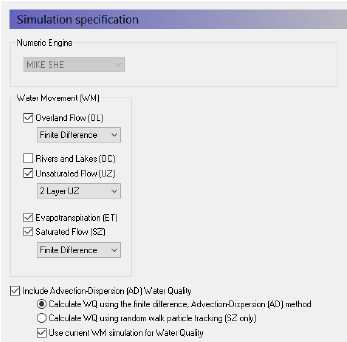
MIKE ECO Lab templates in MIKE SHE
MIKE ECO Lab is only available when Water Quality is selected. Thus, to be able to use MIKE ECO Lab, the Water Quality option in the main Simulation Specification dialogue must be selected
.
Note also that MIKE ECO Lab will only work with the Finite Difference AD method.
After activating the Water Quality module, the MIKE ECO Lab option must be selected in the WQ Simulation Specification dialogue.
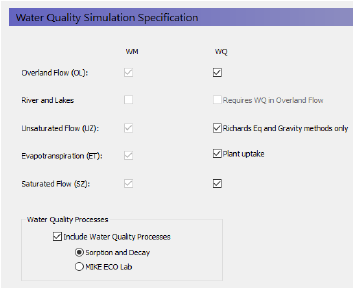
A new data tree branch will appear, where MIKE ECO Lab templates can be specified for each of the hydrologic processes - Overland Flow, the Unsaturated Zone, and the Saturated Zone. Separate templates are required for each of these zones because the processes in each of these domains are very different
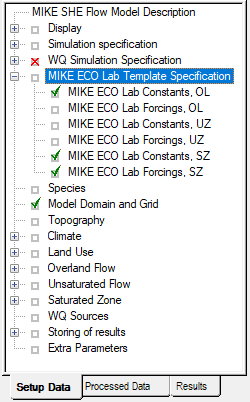
In the MIKE ECO Lab Template Specification dialogue, there is a checkbox for each of the processes. These checkboxes are active if the Water Quality is activated for the process in the WQ Simulation Specification dialogue
. 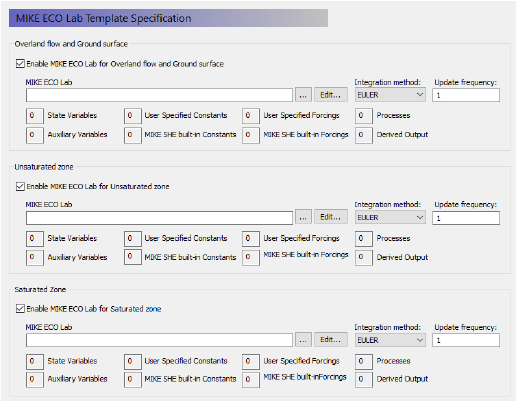
When you enable MIKE ECO Lab for the specific process, you will be able to browse to the required MIKE ECO Lab template. Specified templates can be directly modified by clicking on the Edit button.
When you browse to a template, the template file is read by the Setup Editor and the number of components (i.e. State Variables, Forcings, Processes, etc.) that have been specified in the template are displayed in the Template summary.

When calculating the concentrations (State Variables) for the next time step, an explicit time-integration of the transport equations is made. Depending on the desired accuracy of this numerical integration, you can chose one of three different integration methods. The methods are in increasing level of accuracy (and numerical effort), starting with the Euler method and finishing with the Runge Kutta 5th Order method).
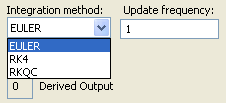
Finally, for each template you can specify an update frequency (see above). The update frequency tells MIKE SHE how frequently to call MIKE ECO Lab. If the water quality processes are slow relative to the simulation time step, you can save considerable simulation time by calling MIKE ECO Lab less frequently. For example, to call MIKE ECO Lab every second or third simulation time step, you would specify an Update frequency of 2 or 3.